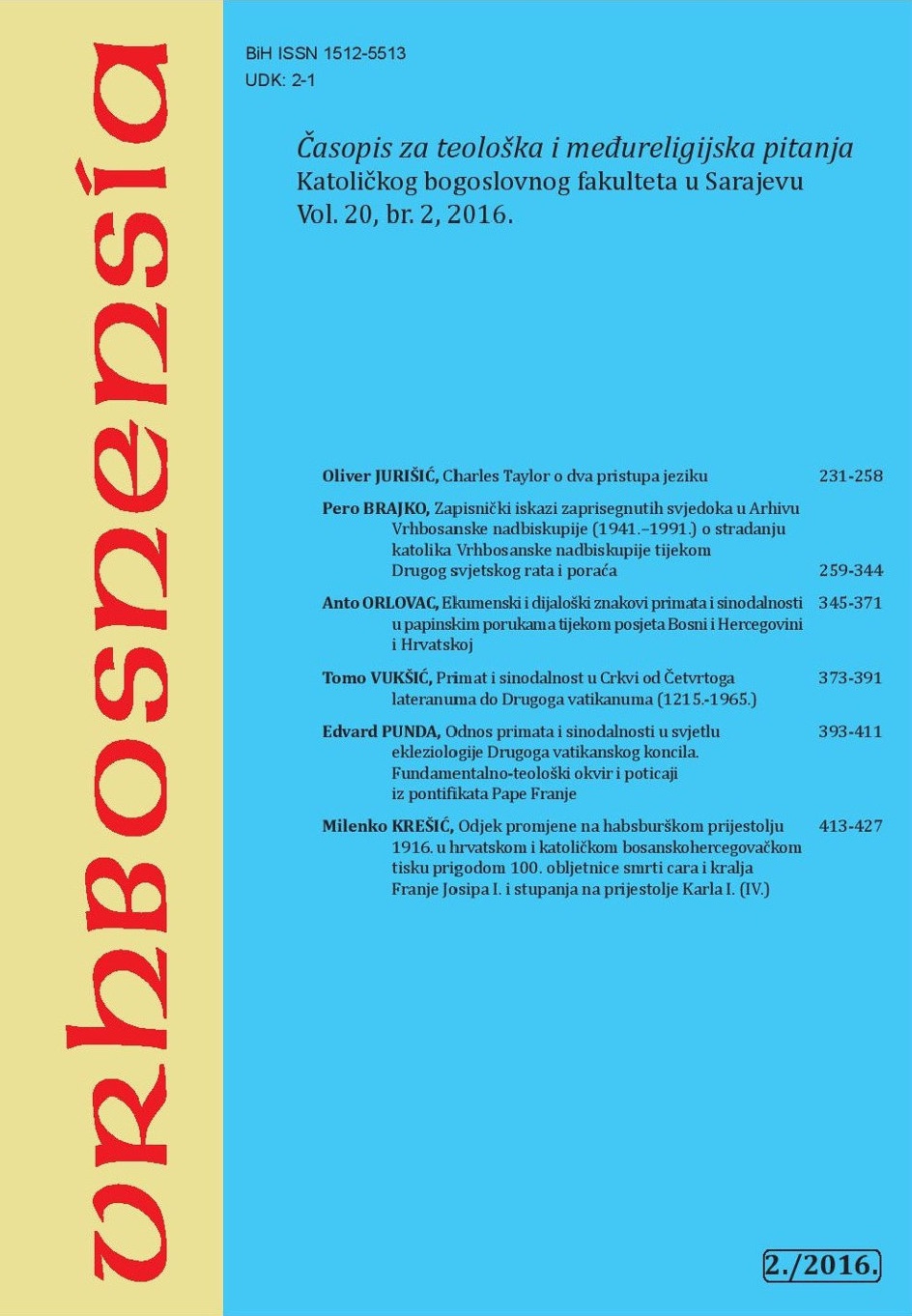Primat i sinodalnost u Crkvi od Četvrtoga lateranuma do Drugoga vatikanuma (1215.-1965.)
Primacy and Synodality in the Church from the Fourth Lateran Council to the Second Vatican Council (1215-1965)
Author(s): Tomo VukšićSubject(s): Christian Theology and Religion, Recent History (1900 till today), 13th to 14th Centuries, Canon Law / Church Law, History of Religion
Published by: Katolički bogoslovni fakultet
Keywords: primacy; synodality; conciliarism; Gallicanism; episcopalism; renewal; council; Pope; Fourth Lateran; First and Second Vatican Council;
Summary/Abstract: At the beginning of this article, the terms primacy and synodality are briefly explained, along with the manner in which they are understood and practiced today in the Catholic Church. This is followed by an analysis of the theological and juridical maturation of these two terms and their practical application. The analysis begins with Innocent III, under whom, with the Constitutiones of the Fourth Lateran Council (1215), the primacy of the bishop of Rome was asserted. The article goes on to consider the theory of “two swords”, and the problem of the relationship between the idea of conciliarism and primacy during the fifteenth century, especially in the documents of the Council of Constance and the Council of Florence, which focused on this topic. In relation to this question, two Croatian theologians of the period are cited: Ivan Stojković and Markantun de Dominis. The Council of Trent did not directly consider these questions, but contributed indirectly, through its conclusions and the later implementation of its conclusions, to the broad confirmation of the primacy of the bishop of Rome against Gallican ideas in France, against German episcopalism and against the renewal movement that spread in Europe after the Napoleonic era. In the period of the First Vatican Council and its dogmatic definition of primacy, Canon Law (1917) introduced juridical clarifications of the relationship between primacy and synodality that remained in force until the renewal that emerged from the Second Vatican Council. At the end of the article, the author considers the thinking of John Paul II, who felt a particular responsibility for finding a solution to the application of papal primacy that could be open to new situations without abandoning the claim to primacy itself. In his encyclical letter Ut unum sint he writes: “When the Catholic Church claims that the function of the bishop of Rome corresponds to Christ’s will, the Catholic Church does not separate that function from the mission appointed to bishops as a whole, since they are also ‘vicars and delegates of Christ’”. The bishop of Rome belongs to their assembly, and they are his brothers in service.
Journal: Vrhbosnensia
- Issue Year: 2016
- Issue No: 2
- Page Range: 373-391
- Page Count: 19
- Language: Croatian

